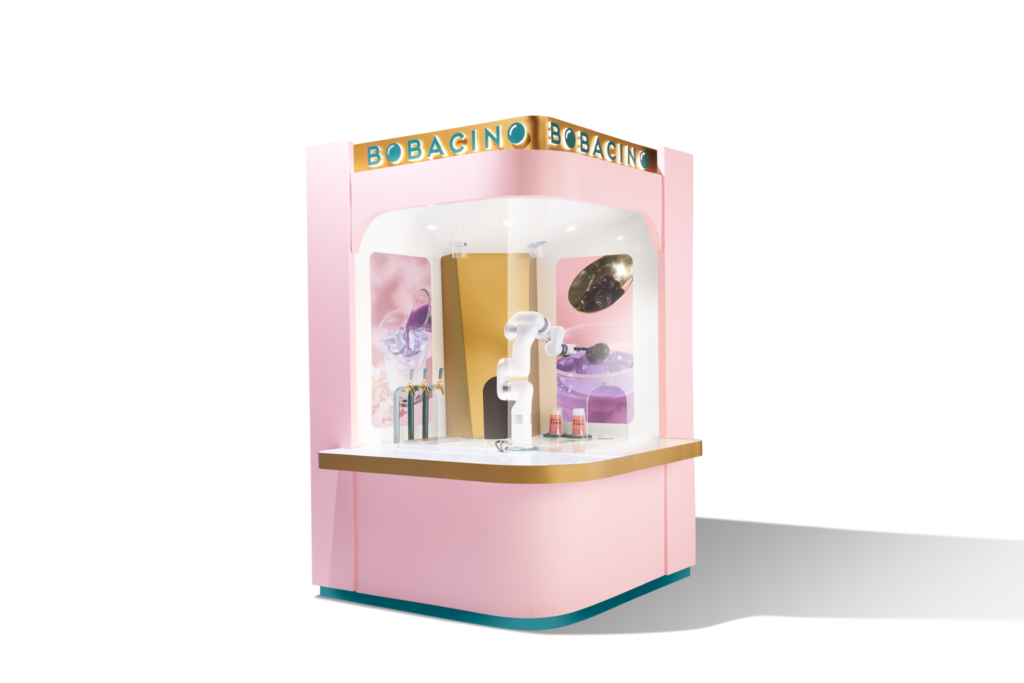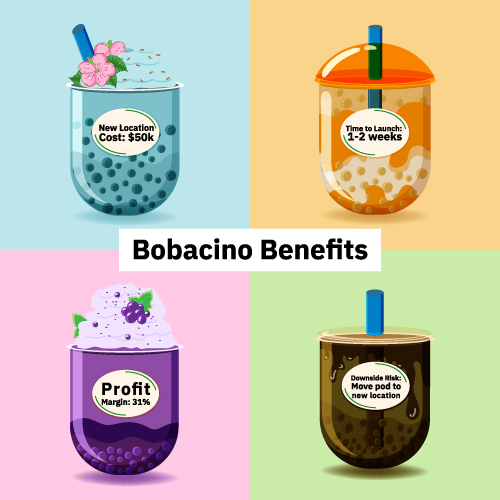Seattle in the early 1990s was booming. And no sector was growing faster than aerospace. But Seattle was also midwifing the birth of a new kind of coffeehouse. Starbucks reimagined the experience of a damn good cup of coffee. It struck a deep and broad chord. Starbucks stores expanded across the US, and by the late 1990s its brand was proving just as popular in Asia and Europe.
I witnessed Starbucks’ global expansion firsthand when I set up my company’s headquarters in Southeast Asia in the late 90s. In Singapore, Jakarta, Taiwan and Malaysia, you couldn’t help but notice Starbucks popping up everywhere. (It was reminiscent of another place and time and household brand — when McDonald’s set up its first European location in London back in the mid-1970s. I was there for that too.)
Food and beverage can often take not just a country but the entire world by storm. We’ve seen it happen many times (well, if you’re as old as I am) with burgers, pizza, fried chicken, frozen yogurt, doughnuts and coffee.
Every decade there seems to be a new food or drink craze. It can be incredibly healthy or incredibly sinful. The world seems to be large enough for both antithetical trends to coexist.
We’re due for a new one to capture our imagination and catapult growth for some lucky company. These global tidal waves seem to come out of nowhere, but that’s never true. They all start small, quietly building momentum in the background until they’ve reached a point where they’re impossible to ignore. Then — all of a sudden — they seem to be everywhere.
Did the Next Big Wave Come From Taiwan?
The trick is, you have to be paying attention. And I have been paying attention… to boba tea. If you’re between 20 and 29 years old, there’s a 94% chance you bought bubble tea in the last three months. But for those of you who aren’t familiar with it, it’s a milk-based tea concoction that traditionally comes with sweet chewy tapioca pearls (called boba) and is flavored with a choice of syrups. It’s capturing a growing number of enthusiasts from around the world – especially Asia.
Boba tea shops are common sights in the cities and towns of Japan, Hong Kong, Singapore, and the country where it was born – Taiwan. And in China, boba tea consumption has now overtaken coffee.
Of course, Asia is not America.
But I’ve noticed a nascent but very discernible trend right here in the U.S. Boba tea shops are experiencing a boom in California, New York and other coastal cities. Its growing acceptance in the U.S. and other western countries has pushed boba tea’s popularity to new heights. In the last six months, visits to boba shops have skyrocketed to up to 25% globally, according to reports from Foursquare (a location intelligence organization).
Boba tea is making significant headway in the U.S. But it hasn’t truly taken off. And there’s a chance it won’t. If indeed it doesn’t, a big reason why will be high labor and real estate costs.
No Muss, No Fuss… and No Humans
But the odds could massively shift in its favor, thanks to a small robotics company called Bobacino. It has made a machine that does all the work so people don’t have to. It prepares the tea, pours the tea, and adds the milk, syrup and tapioca balls. And then it takes your payment. No muss, no fuss and no humans.

A Bobacino machine – photo courtesy of Bobacino
The robot has already been built. And it works. I saw a prototype when I recently visited Wavemaker Labs in Segundo, California. It’s the studio supporting Bobacino with engineering and financing needs. The next prototype will be faster and have more functionality. It’s the one that Bobacino plans to commercialize sometime around the end of 2023 or beginning of 2024.
Robotics — when done right — should do much more than just save on labor costs. And this Bobacino robot brings a slew of advantages to boba tea retailers.

Because of its light footprint — taking up only 16 square feet — it costs only $50,000 to set up the booth. Typical boba shop costs range from $200,000 to $375,000, so that’s a huge 75% to 85% savings. That alone is a game changer, but it doesn’t stop there. Just one to two weeks after writing that $50,000 check, your booth will be up and running. That’s a “slight” improvement over the 12 months it normally takes. And your profit margin jumps six times from an historical norm of 4.9% to a much more appealing 31%.
Best of all, the ultimate worst case scenario is avoided. Typically, if your business fails to gain traction, you lose all your money. With a Bobacino booth, all you have to do is move it to another high-traffic area. And with your reduced labor and operating costs, chances are you’ll enjoy success.
Bobacino’s “Unfair” Competitive Advantage
Bobacino has completely rewritten the rules of what constitutes downside (much lower risk) and what constitutes upside (much bigger profits).
For already established boba tea retailers, it’s a low-cost and low-risk way to expand. For new entrepreneurs wishing to break into the boba tea retail space, Bobacino offers an irresistible suite of advantages that breaks new ground in terms of affordability, speed to market and convenience.
And once they’ve made some money, they can always choose to open a bigger boba tea shop run by humans. But my question is, why would they? The profits are thinner, and the risks are higher.
Overall, the economics of a traditional human-run shop is simply not competitive to what Bobacino will offer via white labeling its technology or selling its robots under its own brand.
Surprisingly Low Risk
If that’s the case, where’s the risk then? (Remember, every investment opportunity carries risk.) Let’s look at three major risk categories…
- Technology. There is still a technology risk that the Bobacino robot does not perform up to expectations. This would be more of a risk if the Bobacino team were going at this alone. But it’s not. It’s getting guidance and help from Wavemaker Labs’ experienced team of engineers and business development folks.And while robotics is hard, this robot is not as complicated as some others being developed in the Wavemaker Labs studio. The technical challenges here should be taken seriously but are very conquerable.
- Costs. What makes robotics risky is not just the technological challenges themselves but also the daunting cost of product development and going through several prototypes. With robotics, it’s never a particularly fast process and costs can add up before a product is ready for commercialization. While Bobacino’s arrangement with Wavemaker Labs significantly ameliorates this risk, it doesn’t entirely eliminate it. Bobacino will need this raise to be successful and will most likely have to raise again.More than anything, that means the company will have to continue to show progress and minimize setbacks. Bobacino CEO Darian Ahler gives it an excellent shot of doing just that. He was co-founder and head of operations at Truebird, which offered a fully automated micro-café that served high-quality espresso. Before that, he spent several years working in the industrial food processing industry as a mechanical engineer. Darian is well-equipped to lead the company through future choppy waters, if need be.
- Trends. A third risk category is external to Bobacino and largely outside its control. Bobacino can help monetize boba tea’s popularity by offering retailers bigger profits while lowering risk. But the appeal of boba tea has to keep growing. Every indication shows that it will. But there’s no guarantee. It’s a small risk that still needs to be taken into account.
All told, the risk is reasonable… especially when compared to price. A robotics play for less than a $10 million valuation is pretty rare. Consider it a sensible concession to the early stage Bobacino finds itself in. Still, most early-stage robotic plays I’ve seen have considerably more risk than Bobacino has. And the vast majority of them are more expensive.
A Powerful Agent of Growth
Bobacino’s growth thesis is double barreled. It’s catching a growing beverage trend at the right time and sees an opportunity to expand right alongside it. Bobacino also feels its robots will enable that growth to find another gear and push it to heights it would otherwise not reach.
It’s a big vision. We brought coffee shops to Asia. And they thrived. Asia is returning the favor by bringing boba tea to our shores. Sweet and delicious, it might just turn out to be the next quintessential American beverage.
That’s the dream scenario. But if boba tea continues to make inroads in Americans’ drinking habits at its current pace, Bobacino’s nifty robotic tea maker just might make that dream come true.
Deal Details
Startup: Bobacino
Security type: Common equity
Price per share: $2.39
Valuation cap: $9 million
Minimum investment: $250.95
Where to invest: WAX
Deadline: July 6, 2022
How to Invest
Bobacino is raising up to $4 million on WAX. If you don’t already have a WAX account, you can sign up for one here.
In order to invest, visit the Bobacino deal page and look over all the information presented. It is highly recommended that you also read the company’s Offering Circular. It will contain useful details not found on the company’s raise page.
Once you’re ready to invest, click the green “Invest” button. Enter the amount you want to invest, starting as low as $250.95, and proceed through the required steps. Be sure your investment is confirmed, then you’re good to go.
Risks
This opportunity, like all early-stage investments, is risky. Early-stage investments often fail. Bobacino will likely need to raise another round of funding in a year or two, if not sooner.
If it executes well, this shouldn’t be a problem. But that’s a risk worth considering when investing in early-stage companies. The investment you’re making is NOT liquid.
Expect to hold your position for five to 10 years. An earlier exit is always possible but should not be expected.
All that said, I believe Bobacino offers an attractive risk-reward ratio.